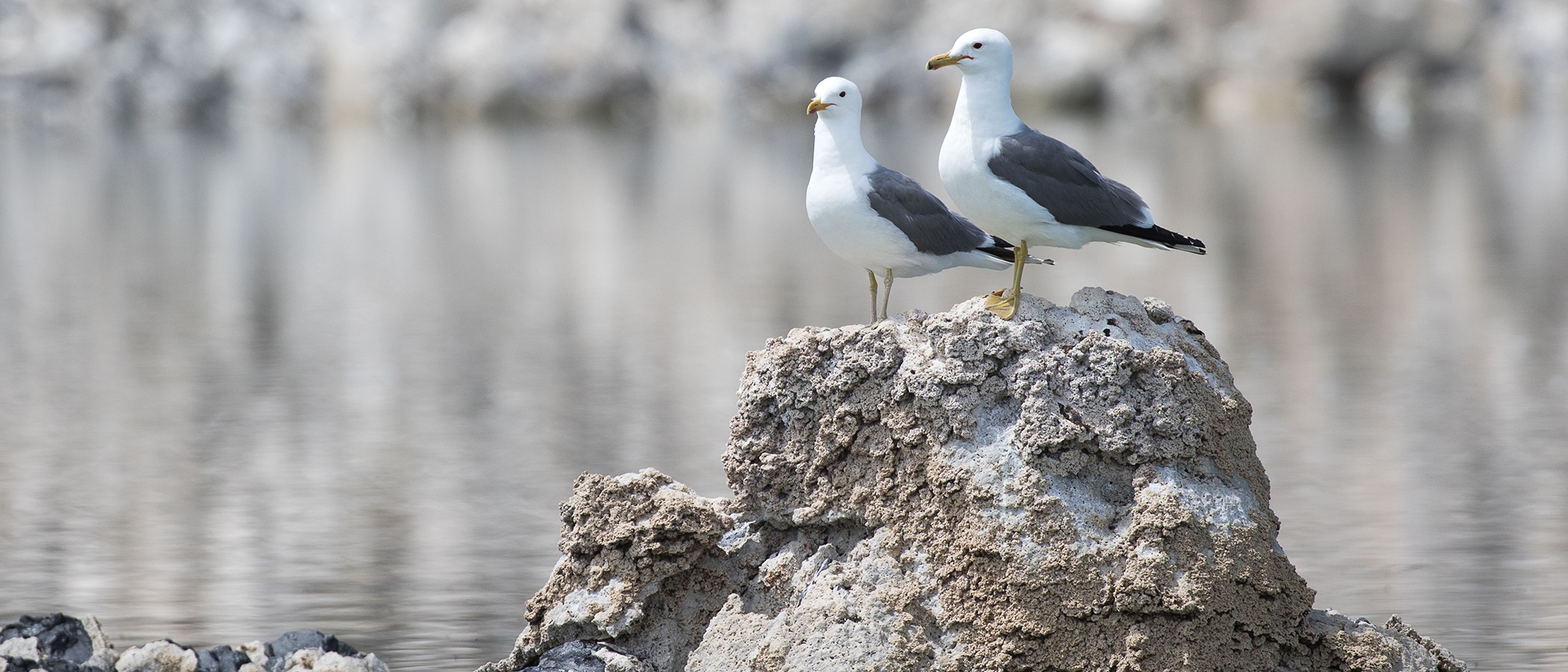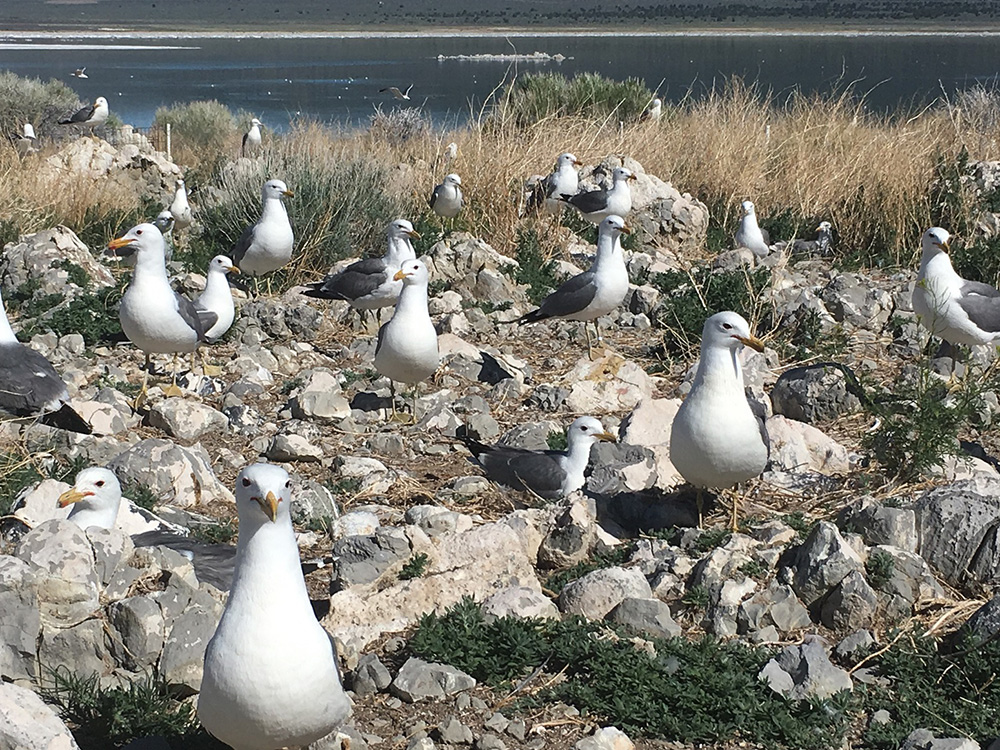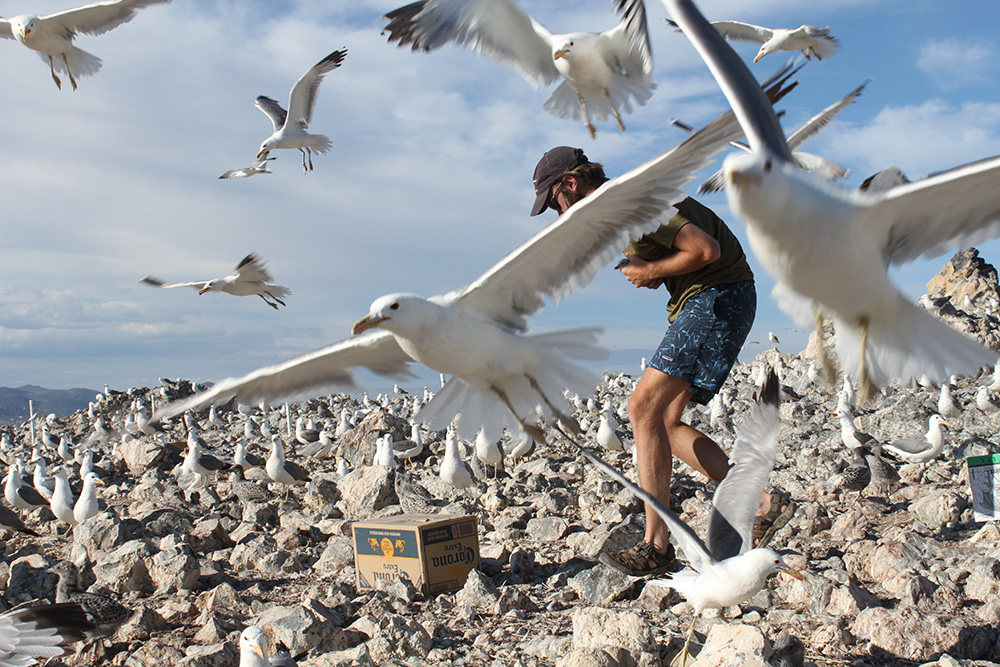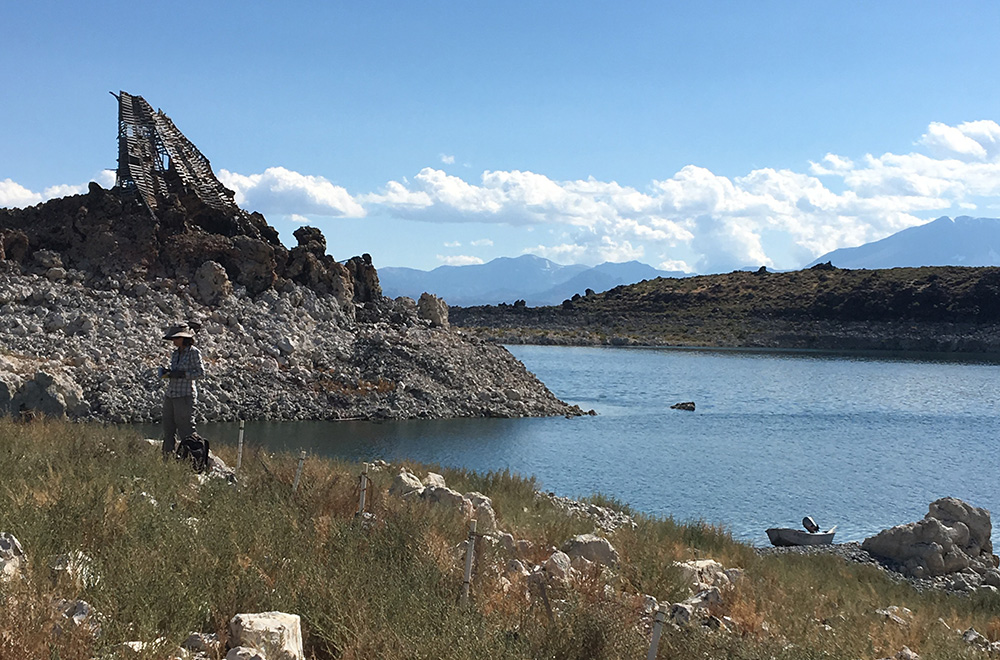
In 2017 Point Blue Conservation Science continued its Mono Lake California Gull monitoring study with the goal of better understanding how the gulls respond to changes in lake conditions over time. Indeed, 2017 was a year of change for both the gulls and this critical long-term study, which is supported by the Mono Lake Committee (read the full report online here).

Following two years of testing, the nesting gull counts were done using aerial photography instead of the previous method of ground counts. Results indicate that counting nesting gulls from the aerial photographs matched ground count tallies by 96%, and the new survey method is less disruptive to the gulls.
Lowest-ever number of nesting gulls
The population of nesting California Gulls (Larus californicus) in 2017 was the lowest ever recorded at 27,000 nesting adults—well-below the 35-year average of 46,000 nesting adults. The reasons for this decline are not fully understood, though springtime temperatures, the timing and size of the annual brine shrimp hatch, coyote activity on the islets in 2016, and invasive plant encroachment all likely played a role. Although last year’s numbers were low, they would have been far worse without the temporary fence that deterred coyotes.
Temporary fence successful
Last winter’s well above average snowpack had not yet melted and raised Mono Lake’s level by the time the gull nesting season began in April, so the lake was low enough that coyotes could access the nesting islets to prey on eggs and chicks. Anticipating this problem, prior to nesting season the Committee worked with California State Parks and other agency partners to install a temporary electric fence across the landbridge, which had been exposed by the lake’s drop over five years of drought.
For the duration of the nesting season the mile-long, mesh-netting fence withstood snowstorms, strong wind, baking sun, and wave action at each end where it extended into Mono Lake. It also withstood forays by coyotes looking for a way around or through, as shown in photos from wildlife cameras along its length, and documented by researchers and volunteers who saw coyote tracks approaching and retreating from the fence.
This spring when gulls return to nest at Mono Lake, the lake will be nearly four feet higher than it was at the same time last year, which means the temporary fence is not needed this nesting season. Last winter’s record-breaking precipitation and the subsequent extraordinary runoff raised Mono Lake to 6381.6 feet above sea level—well above the 6380-foot threshold at which a fence across the exposed landbridge is necessary to protect nesting gulls from coyotes. The fence, which was removed last August, will remain in storage and the gulls will once again be protected from mainland predators naturally by a moat of Mono Lake water.
Although coyotes did not reach the islets in 2017, there may have been some lingering effects from the prior year. In 2016 coyote activity was documented on at least one islet, which likely contributed to the low number of nesting gulls last year—the study has previously documented that islets visited by coyotes are usually avoided by nesting gulls the following year.
While the gulls nested in safety from mainland predators last year, a new factor may have affected the population.
Invasive weed encroaches on nesting ground
California Gulls select open ground areas for nesting, which have, until last year, been plentiful on the islets in Mono Lake. Last year researchers documented rapid, thick growth of the thigh-high, prickly, dense Eurasian invasive weed Bassia hyssopifolia on the islets, which encroached quickly on the available nesting space. That may have discouraged some gulls from nesting and caused others to lose access to their nests over the summer—researchers found two deceased chicks tangled in the weedy growth during a September site visit. Bassia continued to grow after nesting concluded last year; as a result the widespread coverage of this thick vegetation could prevent gulls from nesting successfully this year.
Last fall gull researchers and Committee staff met with US Forest Service and California State Park staff to discuss what could be done to combat the Bassia so that returning gulls have places to nest. The reason for the sudden abundance of Bassia is unclear, but removal tests conducted on the islets in 2012 produced a lasting benefit—Bassia was slow to move back into cleared areas.
The group considered several options for removing the weeds and decided to pursue controlled burns with hand removal as a secondary option. Controlled burning will be the most effective at removing thick mats of previous growth and slowing new growth across a wide area. Permitting and planning is underway for the burns, which will hopefully take place in early March before the gulls arrive.


Setting gulls up for success
Water diversions that began in the Mono Basin in the 1940s drastically changed Mono Lake’s ecosystem, which impacted the thriving gull colony. As the lake rises to its long-term management level, interventions such as the temporary fence and controlled burns can help California Gulls nest safely and as productively as possible. When you see gulls wheeling overhead during your visit to Mono Lake you’ll be able to envision the behind-the-scenes efforts made to keep their nesting grounds safe.
This post was also published as an article in the Winter & Spring 2018 Mono Lake Newsletter (pages 7 and 25). Top photo courtesy of Point Blue Conservation Science.
